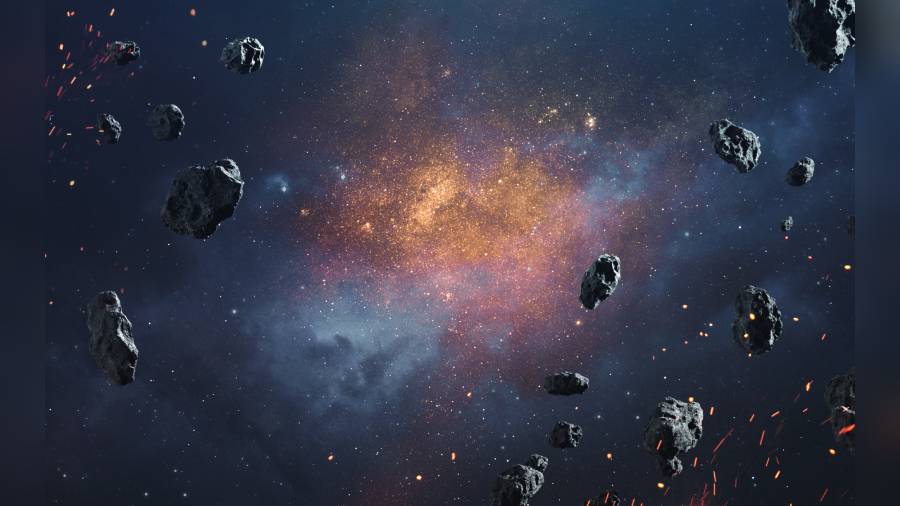One of the thus-far theoretical duties of the astronomer is to inform the public that something very big and horrible is about to happen: the sun will soon explode, a black hole has just wandered into Earth’s path, hostile aliens have amassed an armada right behind the moon.
In the new Netflix film Don’t Look Up, a pair of astronomers, played by Leonardo DiCaprio and Jennifer Lawrence, assume this responsibility when they discover that a “planet-killing” comet is headed straight for Earth and must spread the news.
It doesn’t go well. The president of the United States, played by Meryl Streep, is more concerned with her poll numbers. Television talk show hosts ridicule the scientists. Rich oligarchs want to exploit the comet’s minerals. Don’t Look Up may be the most cinematic fun anyone has had with the End of the World since Stanley Kubrick’s 1964 classic black comedy, Dr. Strangelove or: How I Learned to Stop Worrying and Love the Bomb.
Watching it brought back my own experience reporting Really Bad news. In March 1998, I was the new deputy science editor of The Times, and my doomsday audience was small but elite: The Times’ top editors. I had been on the job for only a month. Nobody really knew me. My direct boss, the science editor, had taken the week off, leaving me in charge.
And so, late in the afternoon on March 11, I walked into the 4.30 news meeting where editors pitch stories for the next day’s front page and announced that we had a late-breaking story by the distinguished reporter Malcolm Browne. “It’s a pretty good story,” I said. “It’s about the end of the world.”
The source was Brian Marsden, director of the Central Bureau for Astronomical Telegrams, which is the International Astronomical Union’s clearinghouse for cosmic discoveries, as well as its Minor Planet Center, which is responsible for keeping track of comets and asteroids. He had just calculated that a recently discovered asteroid, a mile-wide rock named 1997 XF11 (now asteroid 35396), would pass within 30,000 miles of Earth on October 26, 2028 — and had a small but real chance of hitting our planet.
“In more than 40 years of computing orbits, I had never seen anything like that before,” Marsden later said. He felt he had a duty to share this with the world in an IAU Circular.
The front-page meeting dissolved into a purposeful pandemonium. I spent the rest of the night answering questions from newsroom colleagues who wanted to know whether they should continue to pay their mortgages, and responding to queries and suggestions from the top editors.
I didn’t want to go home that night but eventually did, in a nervous fritter. The next morning it was already all over. Pictures of the asteroid from several years earlier had turned up overnight, and Marsden had recalculated the orbit and found that 1997 XF11 would miss the Earth by 6,00,000 miles. That was still close by cosmic standards, but safe for civilisation.
In the following days, Marsden was publicly scolded by his colleagues and the media as a “Chicken Little” who had made “cockamamie calculations” without consulting other astronomers who already knew that the asteroid posed no risk. Nasa told the astronomers to get their act together before blindsiding the agency and the public with news of an apocalypse.
Marsden apologised for generating such a scare, but noted that he had helped raise awareness on the danger of asteroid strikes and extinction.
But the incident was indeed a kind of turning point, according to Amy Mainzer, an asteroid expert at the University of Arizona, US, who served as a scientific consultant on Don’t Look Up.
In 2005, Congress ordered Nasa to find and begin tracking at least 90 per cent of all asteroids larger than 500 feet wide or so that come near Earth. (They neglected to provide much money to pay for the search until years later.) The word was out that we live in a cosmic shooting gallery.
These days, computers do the work of sorting asteroids and comets, automatically calculating orbits from new observations, comparing them with known objects, scoring them for how dangerous they are and sending out the results to astronomers. Anything that comes within 5 million miles of Earth is considered a Potentially Hazardous Object, or PHO.
Don’t Look Up, directed and co-written by Adam McKay, is less about asteroids than about the tendency of humans to dismiss bad news from science and to embrace misinformation. It was conceived as an allegory about the failure to act on climate change. “A lot of people don’t want to hear it,” Mainzer said. “As a scientist, this is terrifying.”
However, the film was shot, very carefully, during the pandemic, and the parallels to the ongoing health crisis are hard to miss.
“Scientists don’t possess the power to effect change,” Mainzer said. “How do we get people to act on scientific information?” Should they “work within the system,” she asked, even if it means they have to cope with purveyors of misinformation?
Humour helps, Mainzer added: “We’re saying it doesn’t have to be like this. We don’t have to go down this path.”
NYTNS










